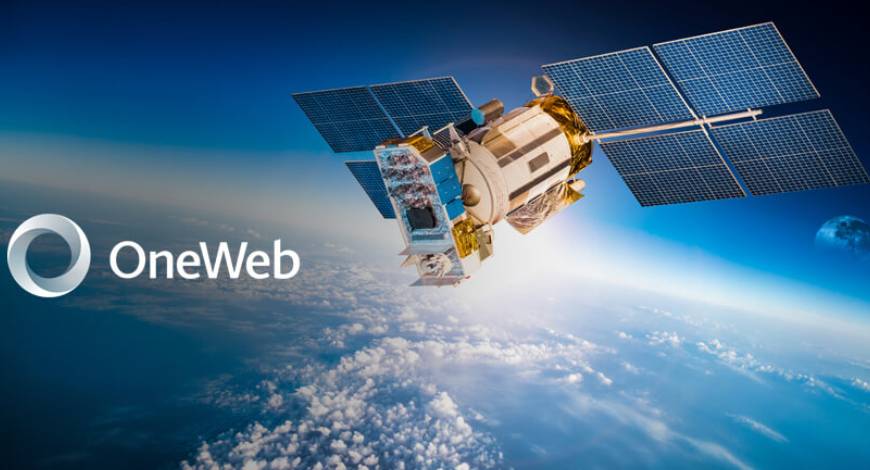Headlines Of The Day
OneWeb seeks spectrum for June launch of satellite communication services

Bharti Group-backed OneWeb has applied for spectrum and is hoping for quick allocation of the radio waves, as it aims to launch commercial satellite communication services by June this year, a top official of Hughes Communications India Private Ltd said.
Hughes Communications India (HCIPL) and OneWeb have signed a six-year distribution partner agreement to provide Low Earth orbit (LEO) connectivity services across India.
In an interview to PTI, HCIPL, President and Managing Director, Shivaji Chatterjee said OneWeb will have an early-mover advantage in India, as competitors who are in fray to provide satellite communications service in India are either in the development stage or lag behind in data link speed.
OneWeb has submitted an application to the Wireless Planning and Coordination Wing (WPC) of the Department of Telecommunications (DoT) for spectrum allocation. Once Spectrum is allocated, OneWeb can launch the commercial services, Chatterjee said.
“OneWeb having received the Indian National Space Promotion and Authorization Centre (IN-SPACe) authorisation is well within its rights to apply to WPC for spectrum allocation, as a VSAT Service provider. Considering both the factors, I hope OneWeb should get the spectrum allocated fast in order to be able to start the commercial service in the first half of 2024,” Chatterjee added.
He said OneWeb will have a significant impact in the mobility space — aero, maritime and land mobility, cellular backhaul for 4G, defense, off-shore rigs, remote bank and enterprise branches.
Sunil Bharti-owned Bharti Group holds majority stake in OneWeb and HCIPL is a joint venture between Bharti Group and satellite services company Hughes.
Chatterjee said OneWeb is ideally placed to cater to the requirements of scantily populated villages where it can provide a 50-200 megabit per second backhaul which then can be further distributed to different consumers in that village — homes, consumer devices, schools, health centres etc.
He said OneWeb has no plans to provide a direct-to-mobile kind of service like Elon Musk-owned Starlink, as the technology is not yet developed and mature.
Starlink is working on technology to provide satellite services directly on smartphones. On March 3, Musk announced that SpaceX has achieved peak download speed of 17 mbps from satellite direct to unmodified Samsung Android phone.
Starlink has applied for a permit to provide services in India but it is yet to get an approval.
The government has decided to allocate spectrum to satellite communication companies without auction through an administrative process for point-to-point connection.
Chatterjee said administrative allocation of spectrum does not necessarily mean that spectrum will be free.
“As a VSAT service provider, we are paying 4 per cent of our revenue to the government as Spectrum Usage Charges (SUC)… This 4 per cent SUC is in addition to the license fee charge which is 8 per cent of our revenue,” Chatterjee said, adding that this 12 per cent is quite substantial.
“We are waiting for more clarity on the details of the administrative allocation of spectrum, including the charges for the same,” he said.
Talking about the early-mover advantage, Chatterjee said JioSpace Fibre is the brand name for the MEO (Medium Earth Orbit) service mPower. Jio has partnered Luxembourg-based satellite firm SES to provide satellite communication services in India.
He said MEO is a global constellation construct and needs a total of 13 satellites to complete the constellation. As of now, mPower has six satellites in orbit and the constellation is not complete.
“Additionally, SES has gone on record to mention that the first six satellites have some electrical issues and they are working through that. It is not yet clear as to when the service will be available in India. This service is also awaiting INSPACe authorisation,” Chatterjee said.
He said that the MEO orbit is at 10,000 kms compared to LEO orbits of around 600-1200 kms.
“For pure latency sensitivity, LEO is the best fit. However, MEO has been seen to be successful in applications like islands which have no fiber, or large cruise ships that need hundreds of Mbps per ship. In the Indian context, it will be interesting to see the use cases for MEO,” Chatterjee said.
He said that the other big LEO entrant, Amazon Kuiper is making progress “but is still 2-3 years away from global commercial service.” “They launched a couple of test satellites a few months back which seem to be doing well. Amazon Kuiper appears to have a big interest in the B2C play too like Starlink ‘? and will be different from OneWeb in that sense which is focused on Business-to-business (B2B) services,” Chatterjee said.
Email query sent to Jio and Amazon on Chatterjee’s comment did not elicit any reply. Indian Express






